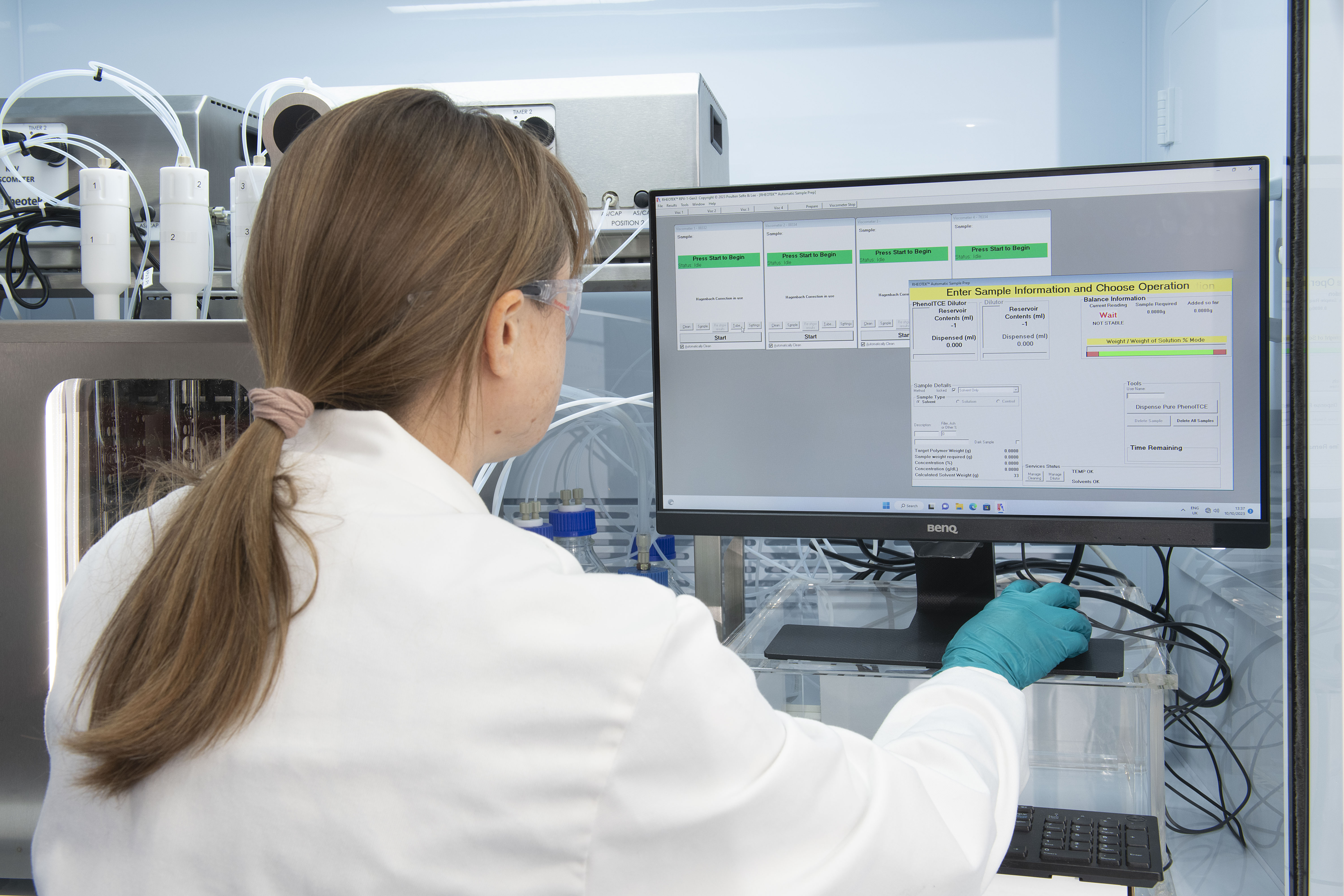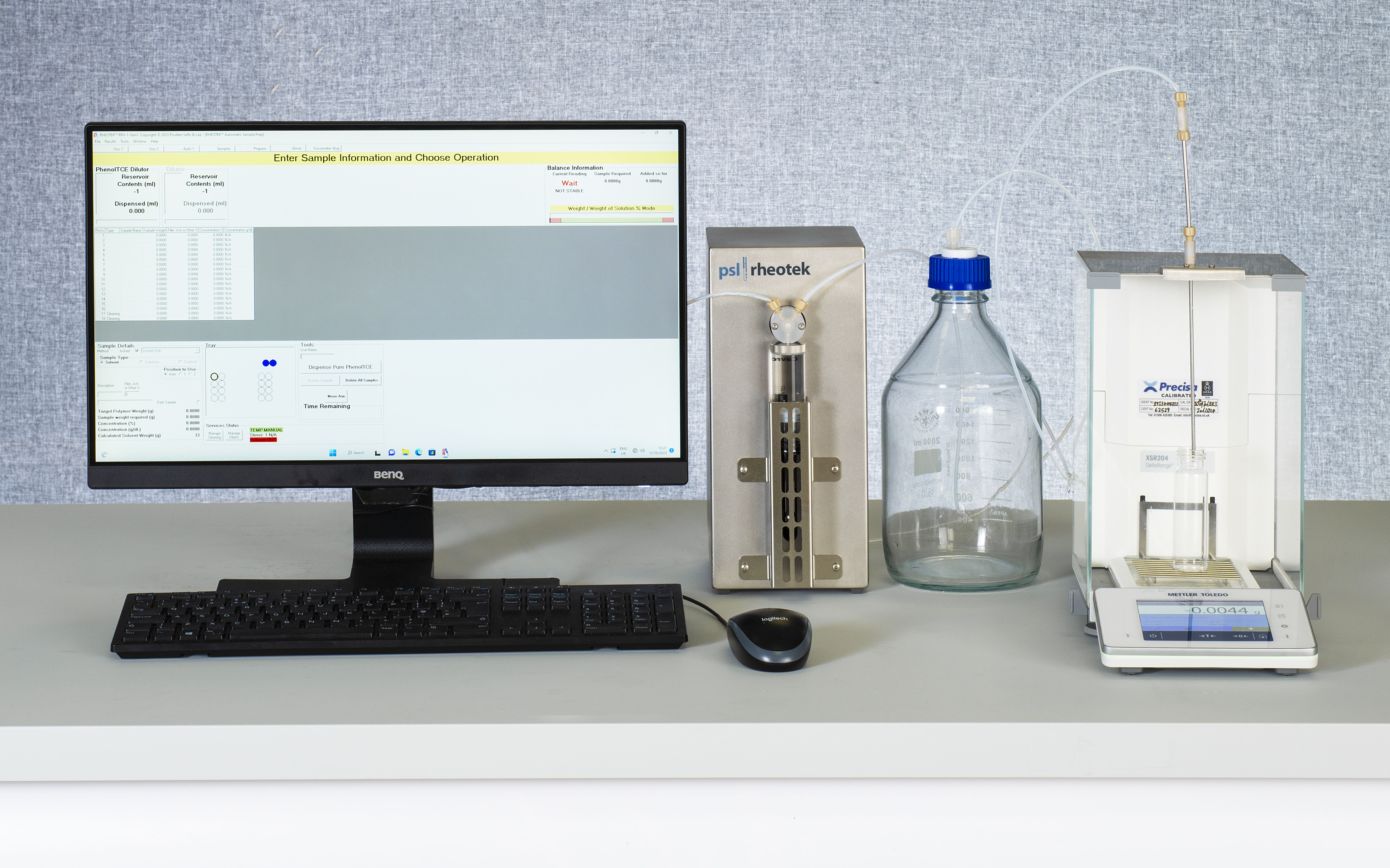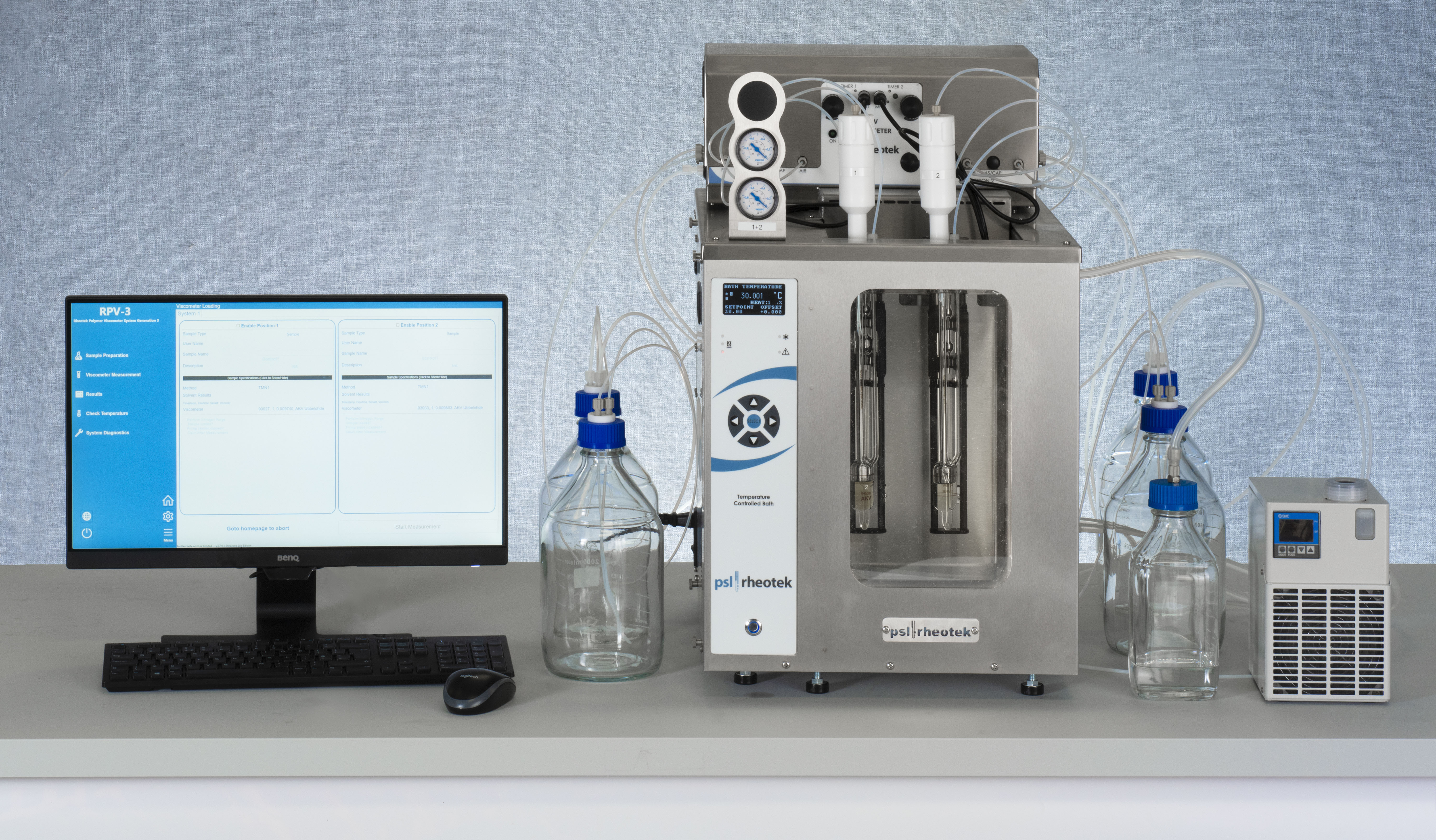Hyaluronic Acid
Hyaluronic acid - EU.Ph. Monograph

What solvents do I need ?
Prior to viscosity measurement, hyaluronic acid is dissolved in a so called buffer solution. This is a phosphate buffer solution with sodium chloride added. After the measurement, the sample path is cleaned with buffer solution followed by a drying sequence using acetone.
What is the temperature of measurement?
Hyaluronic Acid is measured at 25 degrees C. The solution is charged into a calibrated glass capillary viscometer. The viscometer is fitted in a constant temperature viscometer bath. Temperature stability of the PSL Rheotek RPV-3 bath is +/- 0.005 degrees C, when it is correctly installed and operated.
What are the installation requirements ?
A laboratory environment with stable temperature. The PSL Rheotek Viscometer for Hyaluronic Acid does not need to be installed in a fume hood
How long does it take?
A complete measurement cycle takes approximately one hour. This includes cleaning and drying of the sample path.
Can I measure Hyaluronic Acid in an easier way?
GPC/SEC is commonly used for determining the molecular weight of polymers and macromolecules.


